0. 引言
利用 Python 开发,借助 Dlib 库进行人脸检测 / face detection 和剪切;
1. crop_faces_show.py :
将检测到的人脸剪切下来,依次排序平铺显示在新的图像上;
实现的效果如 图1 所示,将 图1 原图中的 6 张人脸检测出来,然后剪切下来,在图像窗口中依次输出显示人脸;
2. crop_faces_save.py :
将检测到的人脸存储为单个人脸图像;
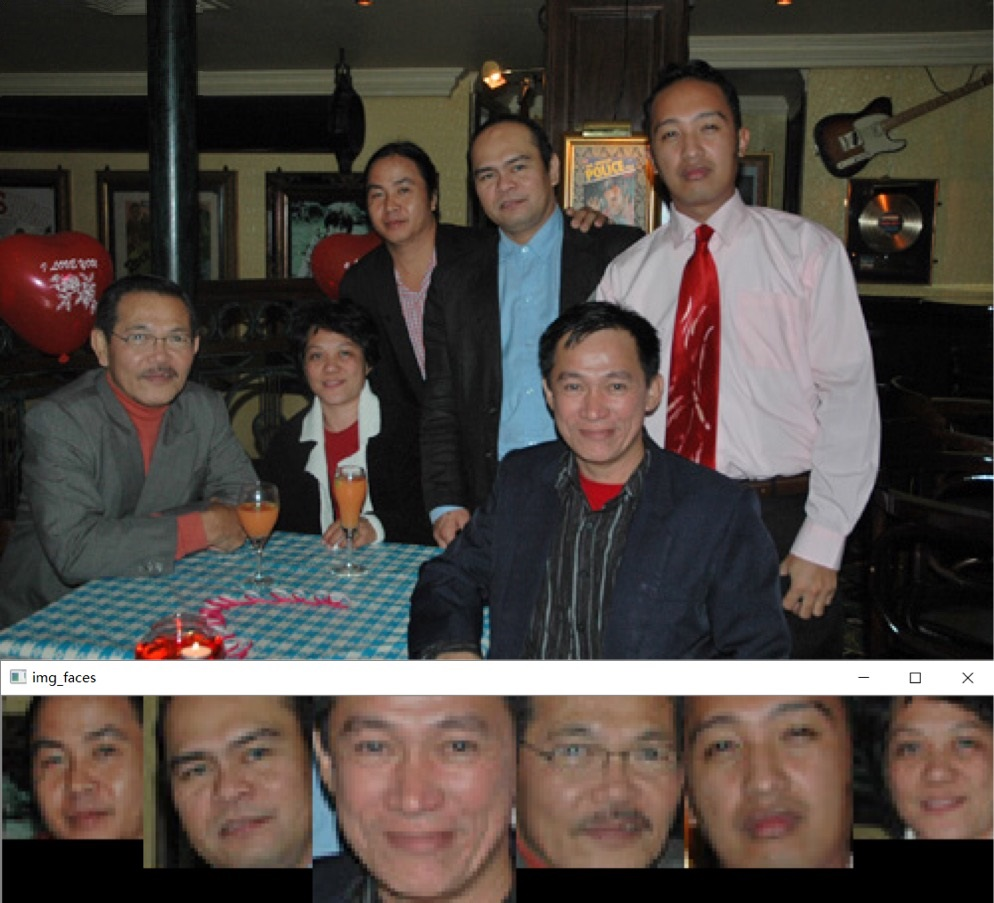
图 1 原图 和 crop_faces_show.py 处理后得到的平铺人脸图像窗口
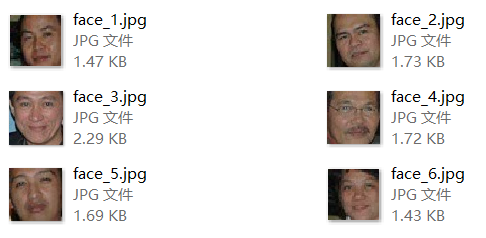
图 2 crop_faces_save.py 处理后得到的多个单张人脸图像文件
源码上传到了我的 Github;
如果对您有帮助或者感兴趣,欢迎 Star 支持下: https://github.com/coneypo/Dlib_face_cut
1. 开发环境
Python: 3.6.3
Dlib: 19.7
OpenCv, NumPy
import dlib # 人脸检测的库 Dlib import numpy as np # 数据处理的库 numpy import cv2 # 图像处理的库 OpenCv
2. 实现过程
工作内容主要以下两大块:Dlib 人脸检测 和 处理检测到的人脸图像
2.1 Dlib 人脸检测
利用已经训练好的 Dlib 正向人脸检测器 detector = dlib.get_frontal_face_detector() 进行人脸检测;
可以得到人脸外接矩形的坐标,用来之后进行裁剪;
具体 Dlib 的使用,请参考我另一篇博客;
( link: Python 3 利用 Dlib 19.7 进行人脸检测);
1 # Dlib 检测器 2 detector = dlib.get_frontal_face_detector() 3 4 # 读取图像 5 path = "/***/image_path/" 6 img = cv2.imread(path+"test_faces.jpg") 7 # print("img/shape:", img.shape) 8 9 # Dlib 检测 10 faces = detector(img, 1) 11 12 print("人脸数:", len(faces))
2.2 绘制新图像
如果你想让检测出来的人脸并排显示的话,需要遍历两次( for k, d in enumerate (faces) ):
第一次遍历:记录下我们需要生成的图像窗口的大小,因为需要将多张照片显示在一张图像上,所以需要知道每张人脸照片的大小;
第二次遍历:根据之前得到的图像尺寸新建空白图像,然后开始用人脸矩形填充图像;
2.2.1 确定空白图像尺寸
( 这部分首先要根据检测到的人脸数和人脸大小,来确定绘制图像所需要的尺寸)
第一次遍历:多张人脸要输出到一行,所以先进行一次人脸的遍历j记下每张人脸的大小,记每张人脸的尺寸为 [ 高度 height * 宽度 width ](高度和宽度说明见 图 3 ):
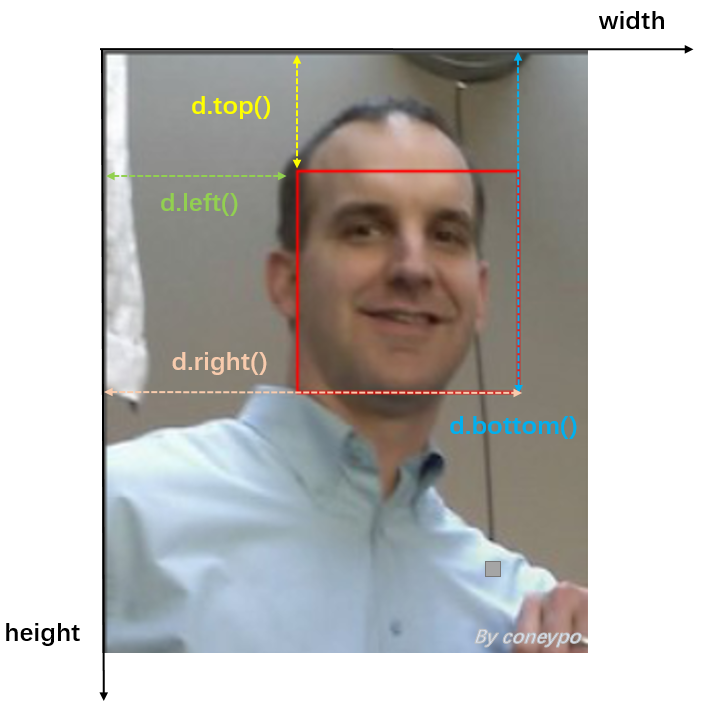
图 3 图像尺寸说明
我取的生成空白图像的尺寸:height_max(最大高度)和 width_sum(宽度之和),然后根据尺寸大小来新建空白图像:
img_blank = np.zeros((height_max, width_sum, 3), np.uint8)

图 4 图像尺寸 height_max 和 width_sum
2.2.2 图像填充
第二次遍历:多根据之前得到的图像尺寸新建空白图像,然后开始用人脸矩形填充图像,每次 width 方向从 blank_start 位置开始,每次填完一张之后记得更新起始位置:( blank_start += width ):
for i in range(height): for j in range(width): img_blank[i][blank_start + j] = img[d.top() + i][d.left() + j]
如果想访问图像的某点像素,可以利用 img [height] [width]:
存储像素其实是一个三维数组,先高度 height,然后宽度 width;
返回的是一个颜色数组( 0-255,0-255,0-255 ),按照( B, G, R )的顺序;
比如 蓝色 就是(255,0,0),红色 是(0,0,255);
3. 源码
3.1 crop_faces_show.py
# created at 2018-01-22 # updated at 2018-09-29 # Author: coneypo # Blog: http://www.cnblogs.com/AdaminXie # GitHub: https://github.com/coneypo/Dlib_face_cut import dlib # 人脸识别的库dlib import numpy as np # 数据处理的库numpy import cv2 # 图像处理的库OpenCv # Dlib 检测器 detector = dlib.get_frontal_face_detector() predictor = dlib.shape_predictor('shape_predictor_68_face_landmarks.dat') # 读取图像 path = "faces_for_test/" img = cv2.imread(path+"test_faces_1.jpg") # Dlib 检测 dets = detector(img, 1) print("人脸数:", len(dets), " ") # 记录人脸矩阵大小 height_max = 0 width_sum = 0 # 计算要生成的图像 img_blank 大小 for k, d in enumerate(dets): # 计算矩形大小 # (x,y), (宽度width, 高度height) pos_start = tuple([d.left(), d.top()]) pos_end = tuple([d.right(), d.bottom()]) # 计算矩形框大小 height = d.bottom()-d.top() width = d.right()-d.left() # 处理宽度 width_sum += width # 处理高度 if height > height_max: height_max = height else: height_max = height_max # 绘制用来显示人脸的图像的大小 print("窗口大小:" , ' ', "高度 / height:", height_max , ' ', "宽度 / ", width_sum) # 生成用来显示的图像 img_blank = np.zeros((height_max, width_sum, 3), np.uint8) # 记录每次开始写入人脸像素的宽度位置 blank_start = 0 # 将人脸填充到img_blank for k, d in enumerate(dets): height = d.bottom()-d.top() width = d.right()-d.left() # 填充 for i in range(height): for j in range(width): img_blank[i][blank_start+j] = img[d.top()+i][d.left()+j] # 调整图像 blank_start += width cv2.namedWindow("img_faces")#, 2) cv2.imshow("img_faces", img_blank) cv2.waitKey(0
实现效果:
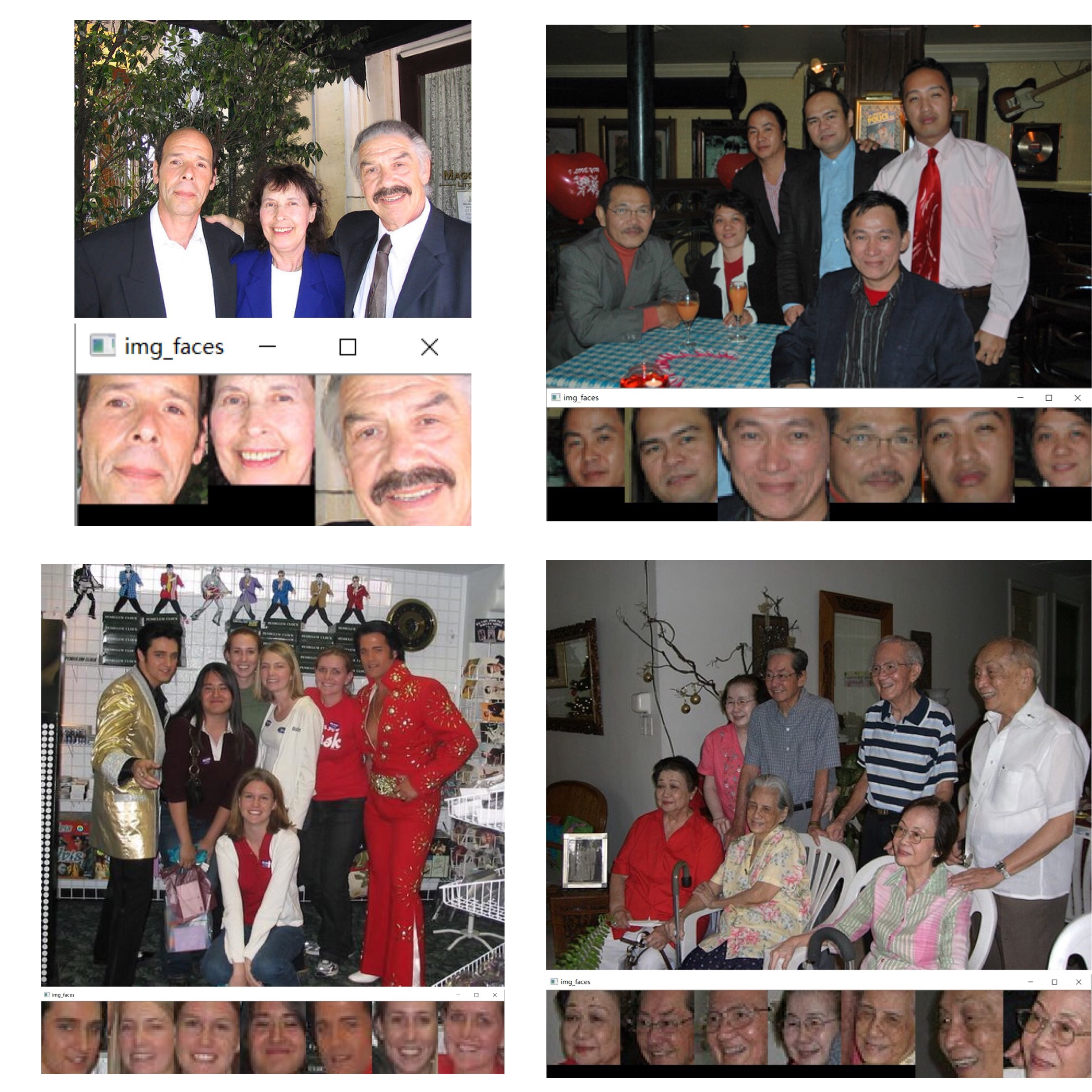
图 5 原图和处理后得到的图像窗口
3.2 crop_faces_save.py
如果你想将识别出来的人脸保存成单个的图像,方便之后处理用,只需将上述代码进行略微修改;
只需一次遍历,根据每次检测到的人脸尺寸,新建空白图像后写入,然后利用 cv2.imwrite 写入到本地:
crop_faces_save.py:
1 # created at 2018-01-22 2 # updated at 2018-09-29 3 4 # Author: coneypo 5 # Blog: http://www.cnblogs.com/AdaminXie 6 # GitHub: https://github.com/coneypo/Dlib_face_cut 7 8 import dlib # 人脸识别的库dlib 9 import numpy as np # 数据处理的库numpy 10 import cv2 # 图像处理的库OpenCv 11 import os 12 13 # 读取图像的路径 14 path_read = "faces_for_test/" 15 img = cv2.imread(path_read+"test_faces_3.jpg") 16 17 # 用来存储生成的单张人脸的路径 18 path_save = "faces_separated/" 19 20 21 # Delete old images 22 def clear_images(): 23 imgs = os.listdir(path_save) 24 25 for img in imgs: 26 os.remove(path_save + img) 27 28 print("clean finish", ' ') 29 30 31 clear_images() 32 33 34 # Dlib 预测器 35 detector = dlib.get_frontal_face_detector() 36 predictor = dlib.shape_predictor('shape_predictor_68_face_landmarks.dat') 37 38 39 # Dlib 检测 40 faces = detector(img, 1) 41 42 print("人脸数:", len(faces), ' ') 43 44 for k, d in enumerate(faces): 45 46 # 计算矩形大小 47 # (x,y), (宽度width, 高度height) 48 pos_start = tuple([d.left(), d.top()]) 49 pos_end = tuple([d.right(), d.bottom()]) 50 51 # 计算矩形框大小 52 height = d.bottom()-d.top() 53 width = d.right()-d.left() 54 55 # 根据人脸大小生成空的图像 56 img_blank = np.zeros((height, width, 3), np.uint8) 57 58 for i in range(height): 59 for j in range(width): 60 img_blank[i][j] = img[d.top()+i][d.left()+j] 61 62 # cv2.imshow("face_"+str(k+1), img_blank) 63 64 # 存在本地 65 print("Save to:", path_save+"img_face_"+str(k+1)+".jpg") 66 cv2.imwrite(path_save+"img_face_"+str(k+1)+".jpg", img_blank)
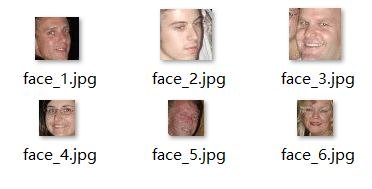
图 6 生成的单个人脸图像文件
# 请尊重他人劳动成果,转载或者使用源码请注明出处:http://www.cnblogs.com/AdaminXie
# 如果对您有帮助,欢迎在 GitHub 上 Star 本项目: https://github.com/coneypo/Dlib_face_cut
# 如有问题请留言或者联系邮箱 coneypo@foxmail.com